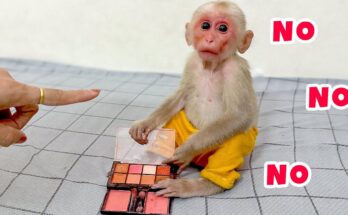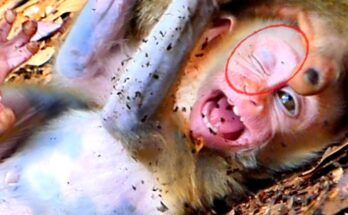
The troop in question was led by Boro, a dominant male who had ruled for nearly two years. Boro was large, powerful, and clever. Under his watch, the troop had stability—mothers raised their young in peace, food was shared fairly, and threats from predators were kept at bay. But dominance in the baboon world never lasts forever.
Lurking at the edges of the troop was Kalo, a rising male in his prime. Kalo was ambitious and had begun to challenge Boro subtly: walking with a higher posture, hoarding food when he could, and slowly winning favor with younger males and some receptive females. Boro noticed, of course, but tolerated it—until Kalo made a move that changed everything.
One early morning, just after sunrise, Kalo confronted Boro near a watering hole. The two clashed in a whirlwind of screams, flying dust, and biting jaws. Other males joined in, either supporting or trying to break the fight. After several minutes of chaos, Boro—bloodied and exhausted—was forced to retreat. Kalo had taken over.
While the battle was short, the aftermath was long and painful.
In baboon society, a new dominant male often sees the infants of his predecessor as threats to his lineage. So began the dark and heartbreaking process of infanticide. Kalo, now the alpha, began attacking Boro’s offspring—tiny babies that had barely begun to walk or play. One by one, several infants were killed. The mothers screamed and tried to protect them, but few could stand up to the strength of an alpha male. It wasn’t out of cruelty—it was instinct. By removing Boro’s lineage, Kalo could bring the females back into estrus and pass on his own genes.
Mothers mourned their young, cradling lifeless bodies, refusing to let go. The troop was no longer a place of harmony, but of fear and uncertainty. Even the juveniles sensed the shift—becoming quiet, withdrawn, unsure of who to trust.
Kalo, though brutal in his methods, was now the undisputed leader. Within weeks, females began mating again, and slowly, a new order was formed. But the scars of that transition ran deep.
Leadership battles among baboons may seem like scenes from a war film, but they are real, raw, and packed with emotion. They are not just about dominance—they ripple through the troop, reshaping relationships, breaking bonds, and forcing all members to adapt to a new, often harsher reality.
While nature works in cycles, and baboons live by rules written deep in their instincts, the cost of these battles—especially for the smallest and most innocent—remains one of the most tragic realities of primate life.


